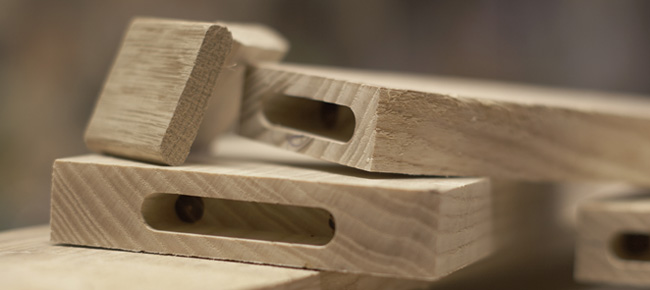To the untrained eye, a carpenter’s latest project may look like a piece of cake. A couple measurements here, a few nails there, saw a couple pieces and you’ve got a beautiful new window frame, shelving unit or whatever else you’re aiming to create. In reality, this is far from the case.
It would be almost impossible to find a carpenter who hasn’t had to deal with one of the many common carpentry pitfalls that come with the job. At Steve Allen, an Ocala carpentry and framing subcontractor, we’ve spent the last 35 years figuring out how to work around these problems, but we haven’t always been experts! Here are five common carpentry mistakes and ways to avoid them.
Glue Smears
There’s nothing more frustrating than spending hours staining wood to the perfect hue, only to come back and see a giant smear of glue that has prevented the wood from taking the stain. One’s first reaction may be to reach for the sandpaper, but we’ll tell you right now, that’s only going to make things worse. The glue will quickly coat the sand paper and render it useless. In this situation, the options are either to scrape the glue off or dye the glue. To scrape off the glue, we use a cabinet scraper, which allows us to get right in-between the glue and the wood to chip it off. The other way to fix this problem is by applying a colored glaze over the glue smear, adjusting the color until it dyes the glue the same color as the surrounding stain.
Dents
The last thing a carpenter wants to do after putting all the wood pieces of their project together is taking them apart to remove a dented piece of wood. Luckily, wood can be a surprisingly pliable medium if handled properly. An easy way we deal with this problem is by steaming out the dent. Just apply some water to the dent, place a wet washcloth over the dent and iron over the cloth in a circular pattern for a couple minutes. With enough steam, the dent usually comes right out!
Loose Joints
Getting joints to fit perfectly can be incredibly difficult, but in certain cases, such as with a mortise-and-tenon joint, a tight fit is integral to the joint’s strength. In this case, we have a couple of options for fixing the problem. The first is by using epoxy resin glue. This type of glue is used specifically because as it cures, it expands to fill the gaps in the joint. Another option is to cut thin pieces of wood and glue them to the tenon in order to fill the gaps.
Tear-Outs
A tear-out is a split that occurs in the wood while it’s being cut, usually by a spinning blade. This often happen across the back edge of a board when it is being cut against the grain. For this problem, it’s best to use techniques to avoid the issue rather than try and fix it. Sticking a backing board against the piece you’re cutting acts as a support system for the wood fibers as the blade exits. A good way to think of a backboard is like a cutting board for cooking. You’ll get a cleaner cut if you cut something directly on a cutting board than if you try to cut it hanging in the air.
Fuzzy Wood
For some types of wood, too much sanding will make them appear fuzzy. The fibers tear so much that trying to stain or topcoat the wood in this state will not look good. Luckily, we know the easy fix for this situation is simply changing the type of sandpaper. Avoid sandpapers with a 150 grit or higher and use a courser paper instead. The courser the paper, the less fuzz.
Curious about any other woodworking woes? Notice any of these mistakes in your current home? Contact us through our site or share with us on any of our social media channels.
#Woodworking woes. Here's our list of common carpentry problems and how they can be fixed! http://t.co/vKiBmFf3fN
— Steve Allen Inc. (@SteveAllenOcala) August 14, 2014
 352.690.6334
352.690.6334
